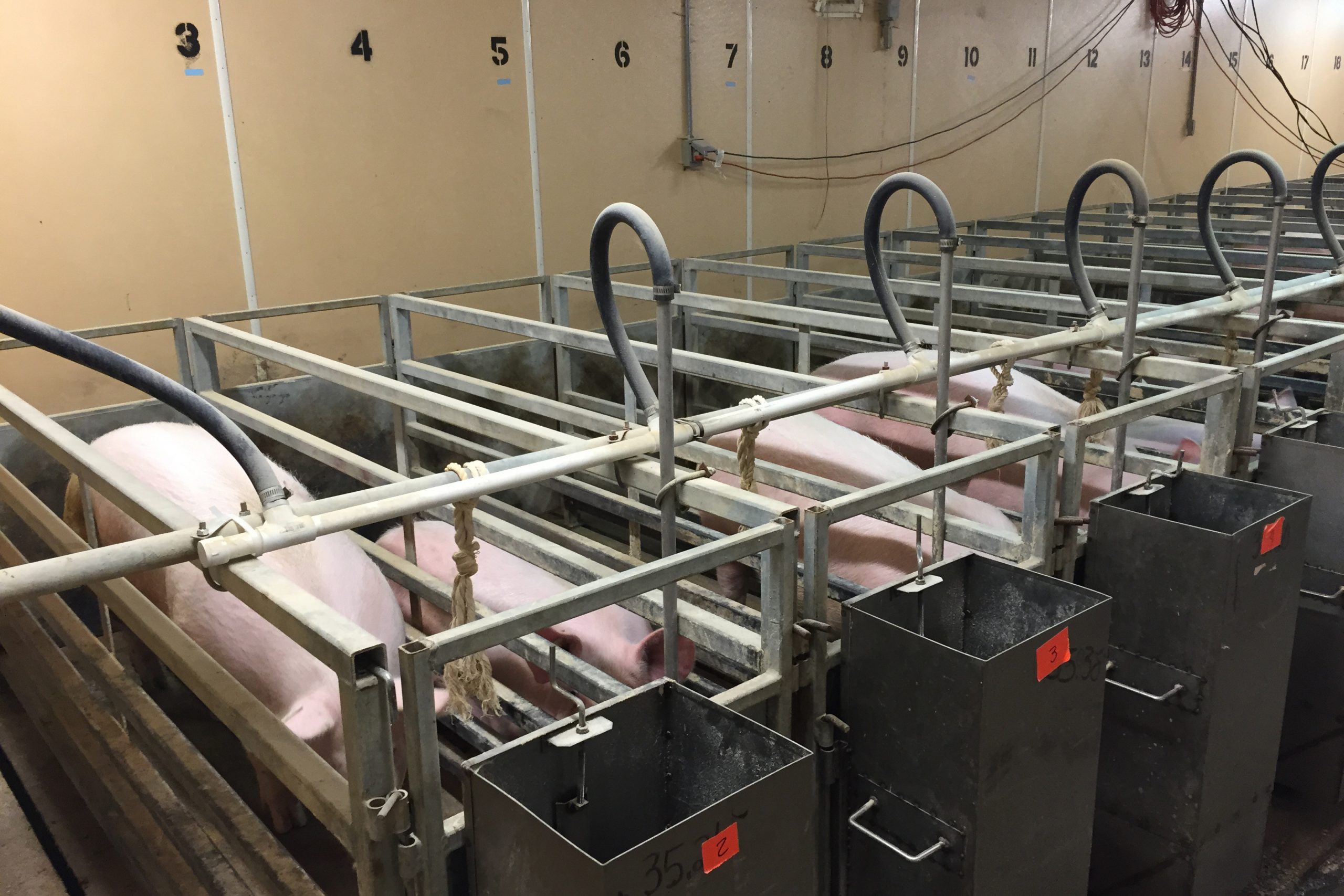Altering feed delivery for pigs pays off

A primary swine production goal is to increase efficiency of lean tissue gains. While many swine production systems currently utilise ad libitum feeding, recent research suggests that altering feeding patterns may positively impact feed efficiency.
Multiple feed management systems are utilised in the US swine industry. In grow-finish systems, ad libitum feeding is the most common regimen, whereas drop feeding and electronic sow feeders are commonly used for restrictive feeding of gestating sows. The differences in feed management systems are typically driven by production goals, i.e. maximal growth in grow-finish systems, reaching ideal bodyweight and condition at first mating in gilt developer units (GDU), and maintaining ideal body condition in gestating gilts and sows.
While production goals vary across production stages, an overall swine industry goal is to improve feed efficiency and thus profitability. Additionally, animal welfare is an important producer and consumer interest and the impact of feed management on pig hunger is a primary concern.
Feeding behaviour of pigs
Feeder visit frequency varies across individual pigs, in part due to genetics, feeder design, feeding program and social status. Feeder visit frequency has been related to genetic selection for feed efficiency, with more feed efficient pigs visiting the feeder fewer times compared to less feed efficient pigs. However, studies manually altering feeding patterns have reported conflicting results related to feed efficiency and changes in body composition. Therefore, in order to provide recommendations for a feeding system that is most beneficial for production goals, more conclusive information is necessary.
Surprisingly, few studies have related pig behaviour to nutrient utilisation and growth. Therefore, understanding how feeding regimen and efficiency of lean growth impacts pig behaviour is important, as feeding behaviour and activity can be indicators of hunger and satiety. Furthermore, behaviour can partially explain differences in energy expenditure.
Ad libitum feeding versus twice daily
A study, conducted at Iowa State University from October to December 2014, compared 2 feeding patterns and evaluated their impact on gilt nutrient utilisation and whole body composition, feeding behaviour and activity. 48 individually housed gilts (55.9 ± 5.2 kg on test bodyweight) were assigned into one of 2 feeding treatments:
- ad libitum access (ad lib) or
- twice daily access where gilts were allowed to eat ad lib between 08:00-09:00 and again from 17:00-18:00.
Pig performance was recorded weekly for approximately seven weeks and average daily gain, average daily feed intake, and gain:feed were calculated. Whole body composition was longitudinally assessed for fat, lean, and protein composition in 12 gilts per treatment using dual X-ray absorptiometry (DXA) at the start and end of the seven week study period to determine tissue accretion rates. Gilt behaviours were assessed using video recordings during week seven for time spent eating, postural changes, standing, sitting, and lying behaviours.

Differences in whole body lean tissue
Gilts fed twice daily had lower average daily gain and average daily feed intake compared to ad lib gilts. However, no difference in gain:feed was observed between twice fed and ad lib feeding treatments. At the end of the seven week trial period, gilts fed twice daily had a lower fat:protein compared to ad lib gilts, indicating that twice fed gilts had a greater percentage of whole body lean tissue. However, fat, lean, and protein tissue accretion rates were lower in gilts fed twice daily compared to those fed ad lib.
Gilts fed twice daily ate less frequently, for a shorter duration of time, and tended to have less frequent postural changes compared to ad lib gilts. No treatment differences were observed in duration of time spent standing, sitting, or lying. As hungry pigs typically spend more time standing and less time lying, these results indicate that gilt hunger did not differ between feeding patterns.
Although feeding patterns did not alter feed efficiency, this study indicates that twice daily access to voluntary feeding reduced gilt adiposity and growth without altering the pig’s behavioural expression of hunger. Therefore, twice daily feeding may be a method of increasing the percentage of lean tissue without negatively impacting gilt welfare.
This work was recently published in the scientific journal Physiology & Behavior 159: 27–32 (2016).
Authors: Jessica D. Colpoys, Anna K. Johnson And Nicholas K. Gabler, Department Of Animal Science, Iowa State University, Us











